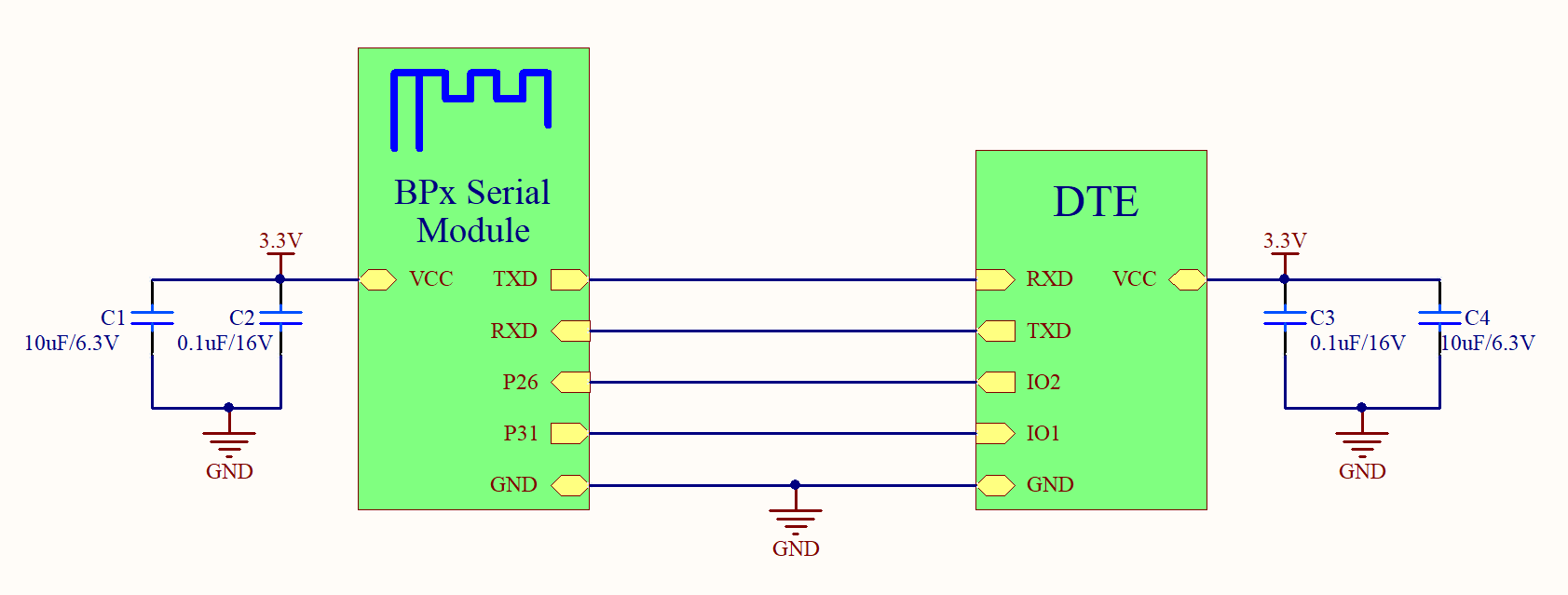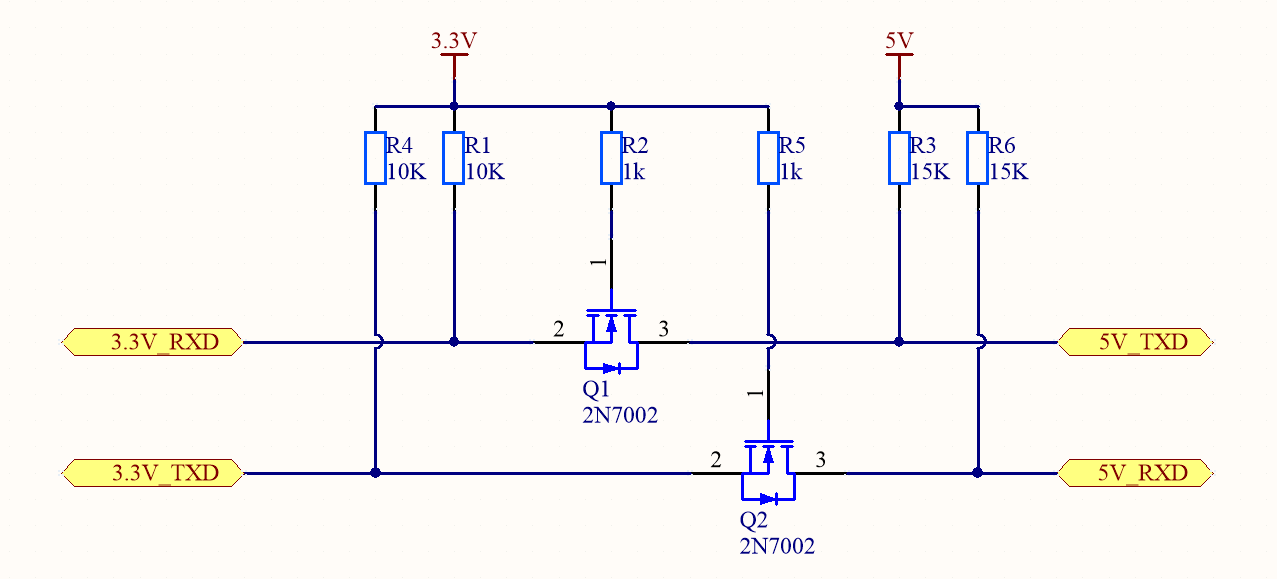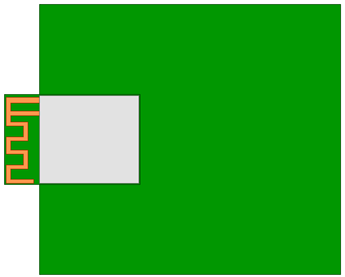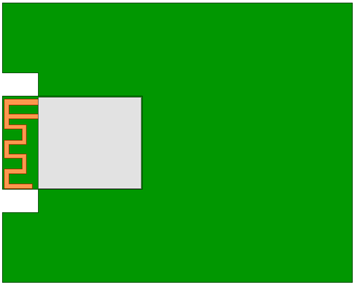BPx Series Modules
Last Updated on : 2024-06-20 03:37:14download
This topic describes information about implementing serial communication between BPx series modules and MCUs.
Overview
BPx series is the Bluetooth Low Energy module developed by Tuya Smart. It consists of a highly integrated PHY6222 Bluetooth chip and a few peripheral circuits. It has built-in Bluetooth protocol stacks and a rich set of library functions. BPx series is built around a 32-bit MCU with 512 KB flash and 64 KB SRAM. The embedded 2.4 GHz transceiver supports Bluetooth 5.1 low energy.
Serial communication protocol
Serial Communication Protocol for Bluetooth
Serial Communication Protocol for Bluetooth Mesh
Serial communication
-
Connection between a module and a 3.3V MCU

The VCC pin is the power pin of the module. The TXD and RXD pins are used for serial communication.
-
Connection between a module and a 5V MCU
In the following circuit diagram, voltage level translation can be implemented with a bidirectional voltage-level translator, a MOS transistor, or a triode.

The VCC pin is the power pin of the module. The TXD and RXD pins are used for serial communication.
Serial communication in low power mode
-
Connection between a module and a 3.3V MCU

-
Connection between a module and a 5V MCU

Level translator reference
-
N-channel MOSFET level translator
In the following circuit diagram, an N-channel MOSFET and a built-in body diode are used to implement two-way communication.

-
NPN triode level translator
In the following circuit diagram, an NPN triode is used to implement one-way communication.

Design specification
-
The following table lists the specification and pin information of BPx modules for serial communication with an MCU.
Module model Input voltage (TYP) Input current (MAX) Power pin Power pin on silkscreen TXD pin TXD on silkscreen RXD pin RXD on silkscreen P26 pin P26 silk screen P31 pin P31 silk screen BP3L 3.3V 24 mA 8 VCC 16 TXD 15 RXD 13 P26 14 P31 BPU 3.3V 11.4 mA 14 VCC 15 TXD1 16 RXD1 8 P26 9 P31 -
Power supply
- Given that the supply current for 3.3V modules must be greater than the maximum input current, a supply current of at least 50 mA is recommended. The total capacity of the external filter capacitor should be greater than 10 μF.
- Place the filter capacitors C1 and C2 near the power pin of the module.
-
Pins of the module
- The reset pin or enable pin of the module is a hardware reset pin. If the pin is not used, it can float. If a module has been paired, this pin cannot be used to clear pairing information.
- Other unused pins can float.
-
Low power mode
-
If the low power firmware is run on the module, the MCU can pull down or up the low power pin on the module to make the module enter or exit the sleep mode. The configuration is shown below.
Low power pin Voltage level in the low power mode Voltage level in the wake up mode P26 Low High -
The module can change the level of the wake-up pin for 200 milliseconds to wake up the MCU for serial data transmission. After that, the pin will go back to the default level. The configuration is shown below.
Wake-up pin Voltage level in the low power mode Voltage level in the wake up mode P31 Low High
-
-
Antenna clearance
-
Do not use metal shells or plastic shells with metallic paint or coating in the direction of the antenna radiation. Do not use metal objects such as screws and rivets near the antenna, which might affect the antenna efficiency.
-
Try to increase the distance from the top shell to the antenna to minimize the impact on antenna performance.

-
Try to increase the distance from the upper and bottom shells to the antenna to minimize the impact on antenna performance.

-
Keep the module away from speakers, power switches, cameras, HDMI, USB, and other high-speed signals to avoid interference.
-
Avoid metal shielding near the antenna. If co-channel interference occurs, you must evaluate the impact on the antenna performance and ensure the isolation from interference.
-
-
Placement
-
Horizontal placement
We recommend that you place the module at the edge of the backplane with the antenna facing outward, and flush the module’s GND terminal with the backplane’s GND terminal. Both terminals are fully connected.

-
Embedded placement
Embed the module into the backplane through a slot that is flushed with or deeper than the module’s GND terminal. The side of the slot must be 15 mm or farther from the module’s board edge.A wider slot can achieve better performance that is still weaker than that of horizontal placement.

-
Vertical placement
Insert the module vertically into the backplane slot with the antenna facing upward. The module’s GND terminal and the backplane’s GND terminal must be fully connected. We recommend that you keep a clearance distance of 15 mm or more around the antenna.
-
RF test items and metrics
The antenna is susceptible to the distance from the shell to the surrounding components. We recommend that you test the radio frequency (RF) performance after the final test. The RF test items and metrics are listed in the following table.
| No. | Test item | Test metric |
|---|---|---|
| 1 | Increasing indoor distance | ≥ 25 m |
| 2 | Increasing outdoor distance | ≥ 50m |
The test items apply to most Bluetooth Low Energy products, excluding certain special products.
Is this page helpful?
YesFeedbackIs this page helpful?
YesFeedback





